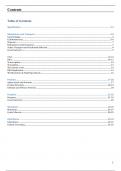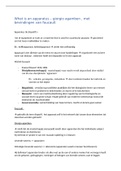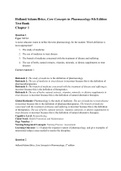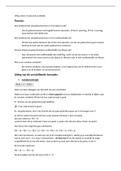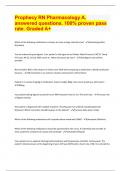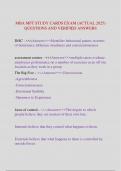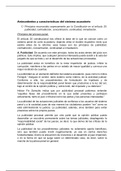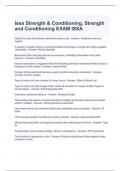Table of Contents
Specification ......................................................................................................................................... 2-3
Membranes and Transport ................................................................................................................... 4-9
Gas Exchange ........................................................................................................................................................................................................ 4
Cell Membranes............................................................................................................................................................................................... 5-6
Osmosis................................................................................................................................................................................................................... 7
Endocytosis and Exocytosis ........................................................................................................................................................................... 7
Active Transport and Facilitated Diffusion ............................................................................................................................................. 8
Core Practical 3 ................................................................................................................................................................................................... 9
DNA ................................................................................................................................................... 10-16
DNA ................................................................................................................................................................................................................ 10-11
Transcription .................................................................................................................................................................................................... 12
Translation ......................................................................................................................................................................................................... 13
The Genetic Code ............................................................................................................................................................................................. 14
DNA Replication ............................................................................................................................................................................................... 15
The Messelson & Stahl Experiment ......................................................................................................................................................... 16
Proteins ............................................................................................................................................. 17-20
Amino Acids and Proteins ........................................................................................................................................................................... 17
Protein Structure ...................................................................................................................................................................................... 18-19
Globular and Fibrous Proteins .................................................................................................................................................................. 20
Enzymes ............................................................................................................................................ 21-25
Enzymes ....................................................................................................................................................................................................... 21-24
Core Practical 4 ................................................................................................................................................................................................ 25
Mutations.......................................................................................................................................... 26-29
Mutations ..................................................................................................................................................................................................... 26-27
Cystic Fibrosis ............................................................................................................................................................................................ 28-29
Inheritance ........................................................................................................................................ 30-33
Inheritance .................................................................................................................................................................................................. 30-31
Genetic Screening ..................................................................................................................................................................................... 32-33
1
,Specification
2.1 i) Know the properties of gas exchange surfaces in living organisms (large surface area to volume
ratio, thickness of surface, difference in concentration).
ii) Understand how the rate of diffusion is dependent on these properties and can be calculated using
Fick’s Law of Diffusion.
iii) Understand how the structure of the mammalian lung is adapted for rapid gaseous exchange.
2.2 i) Know the structure and properties of cell membranes.
ii) Understand how models such as the fluid mosaic model of cell membranes are interpretations of
data used to develop scientific explanations of the structure and properties of cell membranes.
2.3 Understand what is meant by osmosis in terms of the movement of free water molecules through a
partially permeable membrane (consideration of water potential is not required).
2.4 i) Understand what is meant by passive transport (diffusion, facilitated diffusion), active transport
(including the role of ATP as an immediate source of energy), endocytosis and exocytosis.
ii) Understand the involvement of carrier and channel proteins in membrane transport.
2.5 i) Know the basic structure of mononucleotides (deoxyribose or ribose linked to a phosphate and a
base, including thymine, uracil, cytosine, adenine or guanine) and the structures of DNA and RNA
(polynucleotides composed of mononucleotides linked through condensation reactions). (1)
ii) Know how complementary base pairing and the hydrogen bonding between two complementary
strands are involved in the formation of the DNA double helix. (1)
2.6 i) Understand the process of protein synthesis (transcription) including the role of RNA polymerase,
translation, messenger RNA, transfer RNA, ribosomes and the role of start and stop codons. (1)
ii) Understand the roles of the DNA template (antisense) strand in transcription, codons on
messenger RNA and anticodons on transfer RNA. (1)
2.7 Understand the nature of the genetic code (triplet code, non-overlapping and degenerate). (1)
2.8 Know that a gene is a sequence of bases on a DNA molecule that codes for a sequence of amino
acids in a polypeptide chain. (1)
2.9 i) Know the basic structure of an amino acid (structures of specific amino acids are not required). (1)
(3)
ii) Understand the formation of polypeptides and proteins (amino acid monomers linked by peptide
bonds in condensation reactions). (1) (3)
iii) Understand the significance of a protein’s primary structure in determining its three-dimensional
structure and properties (globular and fibrous proteins and the types of bonds involved in its three-
dimensional structure). (1) (3)
iv) Know the molecular structure of a globular protein and a fibrous protein and understand how
their structures relate to their functions (including haemoglobin and collagen). (1) (3)
2
,Specification
2.10 i) Understand the mechanism of action and the specificity of enzymes in terms of their three-
dimensional structure. (1) (3)
ii) Understand that enzymes are biological catalysts that reduce activation energy. (1) (3)
iii) Know that there are intracellular enzymes catalysing reactions inside cells and extracellular
enzymes produced by cells catalysing reactions outside of cells. (1) (3)
2.11 i) Understand the process of DNA replication, including the role of DNA polymerase. (1)
ii) Understand how Meselson and Stahl’s classic experiment provided new data that supported the
accepted theory of replication of DNA and refuted competing theories. (1) (2)
2.12 i) Understand how errors in DNA replication can give rise to mutations. (1) (2)
ii) Understand how cystic fibrosis results from one of a number of possible gene mutations. (1) (2)
2.13 i) Know the meaning of the terms: gene, allele, genotype, phenotype, recessive, dominant,
incomplete dominance, homozygote and heterozygote. (2)
ii) Understand patterns of inheritance, including the interpretation of genetic pedigree diagrams, in
the context of monohybrid inheritance. (2)
2.14 Understand how the expression of a gene mutation in people with cystic fibrosis impairs the
functioning of the gaseous exchange, digestive and reproductive systems. (2)
2.15 i) Understand the uses of genetic screening, including the identification of carriers, pre-implantation
genetic diagnosis (PGD) and prenatal testing, including amniocentesis and chorionic villus sampling.
(2)
ii) Understand the implications of prenatal genetic screening. (2)
2.16 Be able to identify and discuss the social and ethical issues related to genetic screening from a range
of ethical viewpoints. (2)
CORE PRACTICAL 3:
Investigate membrane structure, including the effect of alcohol concentration or temperature on membrane
permeability.
CORE PRACTICAL 4:
Investigate the effect of enzyme and substrate concentrations on the initial rates of reactions. (1) (3)
3
,Gas Exchange
2.1 i) Know the properties of gas exchange surfaces in living organisms (large surface area to volume
ratio, thickness of surface, difference in concentration).
ii) Understand how the rate of diffusion is dependent on these properties and can be calculated using
Fick’s Law of Diffusion.
iii) Understand how the structure of the mammalian lung is adapted for rapid gaseous exchange.
Fick’s Law
• Rate of diffusion is directly proportional to surface area.
• Rate of diffusion is directly proportional to concentration gradient.
• Rate of diffusion is inversely proportional to diffusion distance.
How is the Alveolus Adapted to Gas Exchange?
1. High Surface Area
• The shape of the alveolus provides a large surface area : volume ratio.
• Quantitiy – there are millions of alveoli in the lungs.
2. Short Diffusion Distance
• Both the alveolar epithelium and capillary endothelium are one cell thick.
• The lumen of the capillary is narrow, which pushes the erythrocytes up against the capillary endothelium.
3. High Concentration Gradient
• Ventilation – inhalation brings air (oxygen) to alveolus; the alveolar air space has a higher concentration
of oxygen than the blood in the capillary, so oxygen diffuses across the membrane.
The Lungs
• Oxygen diffuses out of the alveoli, across the
alveolar epithelium and the capillary endothelium,
into the blood.
• Carbon dioxide diffuses into the alveoli from the
blood and is breathed out.
4
, Cell Membranes
2.2 i) Know the structure and properties of cell membranes.
ii) Understand how models such as the fluid mosaic model of cell membranes are interpretations of
data used to develop scientific explanations of the structure and properties of cell membranes.
Phospholipid Bilayer
• Cell membrane, consisting of two layers of phospholipids.
Triglyceride Molecules
• Triglycerides – made up of 3 fatty acids and 1 glycerol
molecule, linked by condensation reactions.
• Ester Bond – bond formed between each fatty acid and
glycerol.
Phospholipids
• In a phospholipid, there is glycerol, 2 fatty acids and a
negatively charged phosphate group (which replaces the third
fatty acid).
• Both phospholipid and triglycerides possess fatty acids, ester
bonds and a glyceride molecule.
Orientation of Phospholipids
• Phospholipid molecules have a head and a tail:
o Head – contains phosphate group; hydrophilic because the phosphate is polar
o Tail – contains 2 fatty acids; hydrophobic because fatty acids are non-polar
• Therefore, the molecules arrange themselves into a bilayer.
o Head = hydrophobic – face outwards, towards water.
o Tail = hydrophilic – face inwards, away from water.
• The membrane has selective permeability:
o Lipid soluble molecules easily pass through by diffusion.
o Hydrophobic substances cannot diffuse through.
Structure of the Phospholipid
Bilayer
• Protein molecules are scattered across the
bilayer and can move around within it.
• Glycoproteins – proteins with a polysaccharide
chain attached.
• Glycolipids – lipids with a polysaccharide chain
attached.
• Cholesterol is also present in the membrane. It
fits between the phospholipid, forming bonds
with them, making the membrane more rigid.
5

